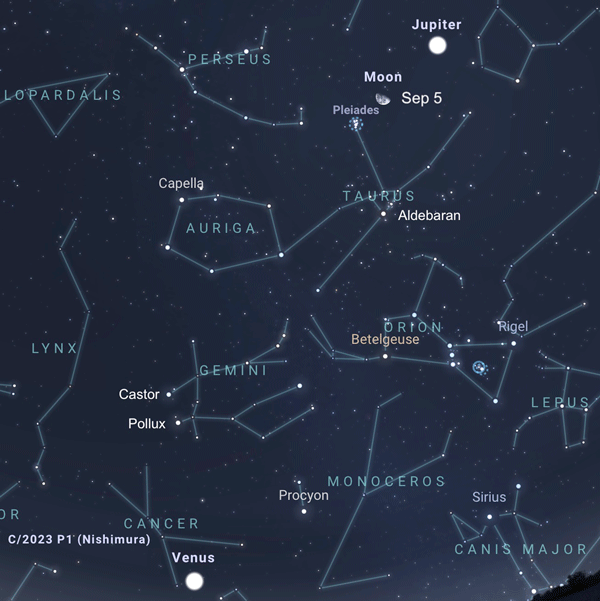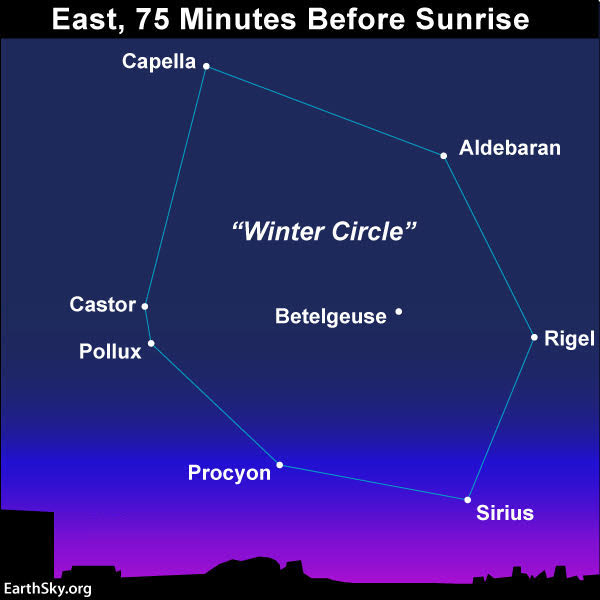
Summer is drawing to a close for us in the Northern Hemisphere. Although it’s still hot outside across much of northern Earth, our days are rapidly shortening now and our nights are getting longer. Meanwhile, a major sign of winter looms large now in the predawn sky, as it does every year at this time. The waning crescent moon can guide your eye to this large lasso of stars – the Winter Circle – on the mornings of September 6-9, 2023.
The Winter Circle – also called the Winter Hexagon – is not a constellation. Instead, it’s an asterism, or recognizable pattern of stars. It consists of six stars in six different constellations. They are all associated with the winter sky for us in the Northern Hemisphere (summer sky for Southern Hemisphere).

Winter Circle’s 6 (or 7) bright stars
Do you know the constellation Orion the Hunter? It’s one of the best-known constellations in the night sky. Orion is big, but the Winter Circle is much bigger! Orion is in the southwest portion of the Winter Circle (lower right on our chart above). If you’ve never seen the Winter Circle, but are acquainted with Orion, this constellation presents a great jumping off place for identifying these stars.
So look at our chart above and notice the star Rigel in Orion. Then start moving around the Circle clockwise. You’ll encounter Sirius in the constellation Canis Major the Big Dog, Procyon in the constellation Canis Minor the Smaller Dog, Pollux (and Castor) in the constellation Gemini the Twins, Capella in the constellation Auriga the charioteer, and Aldebaran in the constellation Taurus the Bull. Nearly all of the Winter Circle stars are 1st-magnitude stars. And that means they’re bright and easy to see.
The exception is the star Castor in Gemini. It’s not a 1st-magnitude star and not as bright as the other stars in the Winter Circle. But it’s pretty bright! In fact, it’s the sky’s brightest 2nd-magnitude star. If you include Castor as a Winter Circle star, then there are seven stars in the Circle.
When to see the Winter Circle
By the way, we don’t see the Winter Circle in June and July because it’s lost in the glare of the sun. However, in late August, the Winter Circle returns to the morning sky. So months from now, when it’s the Northern Hemisphere’s winter, we’ll see the Winter Circle in the evening sky.

Bottom line: The moon will be passing through the Winter Circle from September 5-9, 2023. Look east before dawn. The brilliant planet Venus and bright planet Jupiter are nearby.











